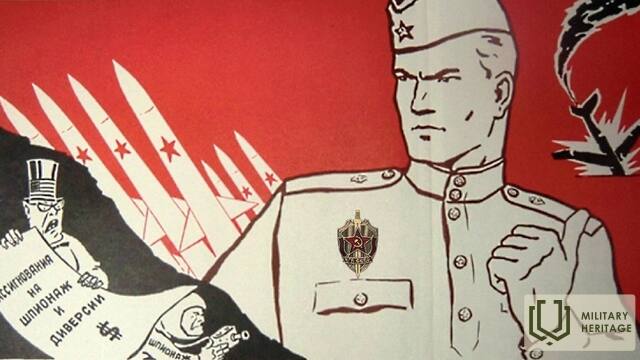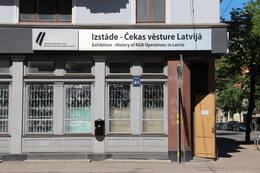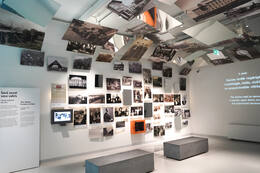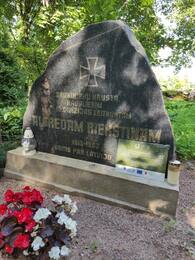Sovietų dvigubi agentai
IV Sovietų okupacija, III Nacionaliniai partizanai
Šeštojo dešimtmečio pradžioje JAV žvalgybos tarnyba CŽV pradėjo vaidinti vis svarbesnį vaidmenį žvalgybos operacijose prieš SSRS, iš pradžių savo veiklą koordinuodama su britų MI-6. Tuo metu britai save pozicionavo kaip SSRS teritorijoje vykdomos veiklos ekspertus, turėdami tiek infiltruotų agentų, tiek informacijos. Jie taip pat dalijosi bendro pobūdžio informacija apie SSRS su amerikiečiais. Visa ši informacija iš tikrųjų pasirodo esanti sovietų kontržvalgybos dezinformacija.
Todėl 1951 m. pasikeitė sovietinės kontržvalgybos prioritetai. Iki tol pagrindinė kontržvalgybos kryptis buvo Didžiosios Britanijos ir SSRS MGB 2. Pagrindinės administracijos struktūroje, pagal slavų abėcėlę, 2A dalis buvo kontržvalgybos operacijos prieš Angliją, 2B dalis – kontržvalgybos operacijos prieš JAV, o 2V dalis – kontržvalgybos operacijos prieš Lotynų Amerikos šalis.
1951 m. gruodžio 25 d. įvyko reorganizacija, kurios metu raidiniai žymėjimai buvo pakeisti skaitmeniniais. Pagrindine kontržvalgybos kryptimi tapo JAV. Taigi SSRS MGB 2-ojoje vyriausiojoje valdyboje 1-asis skyrius buvo atsakingas už kontržvalgybos operacijas prieš JAV, 2-asis skyrius – už kontržvalgybos operacijas prieš Angliją, o 3-iasis skyrius – už kontržvalgybos operacijas prieš VFR. Ši tvarka galiojo iki SSRS žlugimo.
SSRS žvalgybos tarnyba turėjo agentų tiek britų, tiek amerikiečių žvalgybos tarnybose, kurie nutekino informaciją SSRS žvalgybos tarnybai ir veikė prieš Vakarus. Tai buvo dalis daug platesnių Maskvos „centro“ įgyvendintų priemonių, dėl kurių specialiai parengta dezinformacija buvo „nutekinta“ Vakarų šalių specialiosioms tarnyboms. Šiems tikslams šeštojo dešimtmečio pradžioje Latvijoje netgi buvo sukurtas netikras „Miško brolių“ dalinys, siekiant britų žvalgybos agentams pademonstruoti „tikrą nacionalinio pasipriešinimo judėjimą“. Sovietų kontržvalgybai pavyko apgauti tiek britų, tiek tikruosius nacionalinius partizanus, taip pat pagrindinį priešininką – JAV CŽV, kuri tuo metu tiesiogiai pradėjo operacijas Latvijoje.
Daugiau informacijos šaltinių
https://www.lsm.lv/raksts/dzive--stils/vesture/kgb-slepenie-arhivi.-spiegu-speles-latvija-cia-agenti-psrs-dienesta.a261845/
https://www.lsm.lv/raksts/dzive--stils/vesture/kgb-slepenie-arhivi.-spiegu-speles-latvija-patiesie-strikisu-raustitaji.a260177/
Susijusi laiko juosta
Susijusios vietos
Paroda KGB pastate „KGB operacijų Latvijoje istorija“
Buvęs SSRS Valstybės saugumo komiteto (paprastai vadinamas Čeka) pastatas atviras lankytojams. Čia čekistai kalindavo, tardydavo ir žudydavo Latvijos piliečius, kuriuos okupacinis režimas laikė priešininkais. Taip pat eksponuojama Latvijos okupacijos muziejaus ekspozicija apie Čekos veiklą Latvijoje. Siūlomos ekskursijos po kalėjimo kameras, koridorius, rūsį ir kiemą. Namas pastatytas 1911 m. ir yra vienas gražiausių pastatų Rygoje. Liaudyje vadinamas „Kampiniu namu“, jis buvo baisiausias sovietinio okupacinio režimo simbolis Latvijoje ir vienas iš SSRS valdžios ramsčių. Čeka iš Kampinio namo veikė okupacijos metu nuo 1940 iki 1941 m., o vėliau nuo 1945 iki 1991 m. Dešimtys tūkstančių latvių nukentėjo nuo tiesioginio politinio persekiojimo. Kova su sovietų valdžios priešais tęsėsi ir po Antrojo pasaulinio karo. Čekos požiūris į savo veiklą šiek tiek pasikeitė po Stalino mirties. Fizinį kankinimą pakeitė psichologinis teroras. Dauguma Čekos agentų buvo latviai (52 %). Antra pagal dydį grupė buvo rusai – 23,7 %. 60,3 % agentų nebuvo Komunistų partijos nariai. 26,9 % agentų turėjo aukštąjį išsilavinimą. Sistema buvo sukurta taip, kad įtrauktų vietos gyventojus ir taip turėtų didesnę kontrolę visuomenėje. Personalo dokumentai ir tarnybos įrašai yra Rusijoje. Ši medžiaga nebuvo prieinama Latvijos valdžios institucijoms ir tyrėjams.
Latvijos okupacijos muziejus
Muziejuje eksponuojama Latvijos istorija nuo 1940 iki 1991 m., nacistinės Vokietijos ir Sovietų Sąjungos okupacijos laikotarpiu. „Ateities namai“ – tai žinomo Amerikos latvių architekto Gunāro Birkertaus suprojektuoto Okupacijos muziejaus rekonstrukcijos ir išplėtimo projektas, taip pat nauja muziejaus ekspozicija. Ekspoziciją „Čekos istorija Latvijoje“ sukūrė Okupacijos muziejus, ji yra buvusiame SSRS Valstybės saugumo komiteto (KGB) pastate „Kampiniame name“. Latvijos okupacijos muziejus buvo įkurtas 1993 m. Jis pasakoja ilgai slėptą Latvijos valstybės, tautos ir žemės likimo istoriją dviejų užsienio totalitarinių valstybių okupacijos laikotarpiu nuo 1940 iki 1991 m. 2020 m. pabaigoje muziejuje buvo daugiau nei 70 000 įvairių istorinių eksponatų (dokumentų, nuotraukų, rašytinių, žodinių ir daiktinių įrodymų, daiktų ir atminimo dovanų). Muziejaus specialistai įrašė daugiau nei 2400 vaizdo įrašų, todėl tai viena didžiausių okupacijos kolekcijų Europoje. Latvijoje, Lietuvoje ir Estijoje klostęsi įvykiai aiškiai parodo, ką tautoms teko ištverti valdant dviem totalitariniams režimams.
Susijusi istorija
Alfredas Riekstinas, pravarde „Imants“, žuvo dėl sovietų dvigubo agento išdavystės.
Latvijos legionierius Alfredas Riekstinas po Antrojo pasaulinio karo buvo užverbuotas dirbti JAV žvalgybos agentūroje CŽV.









